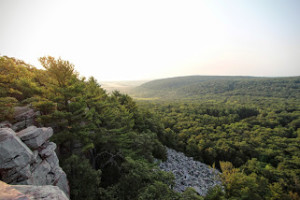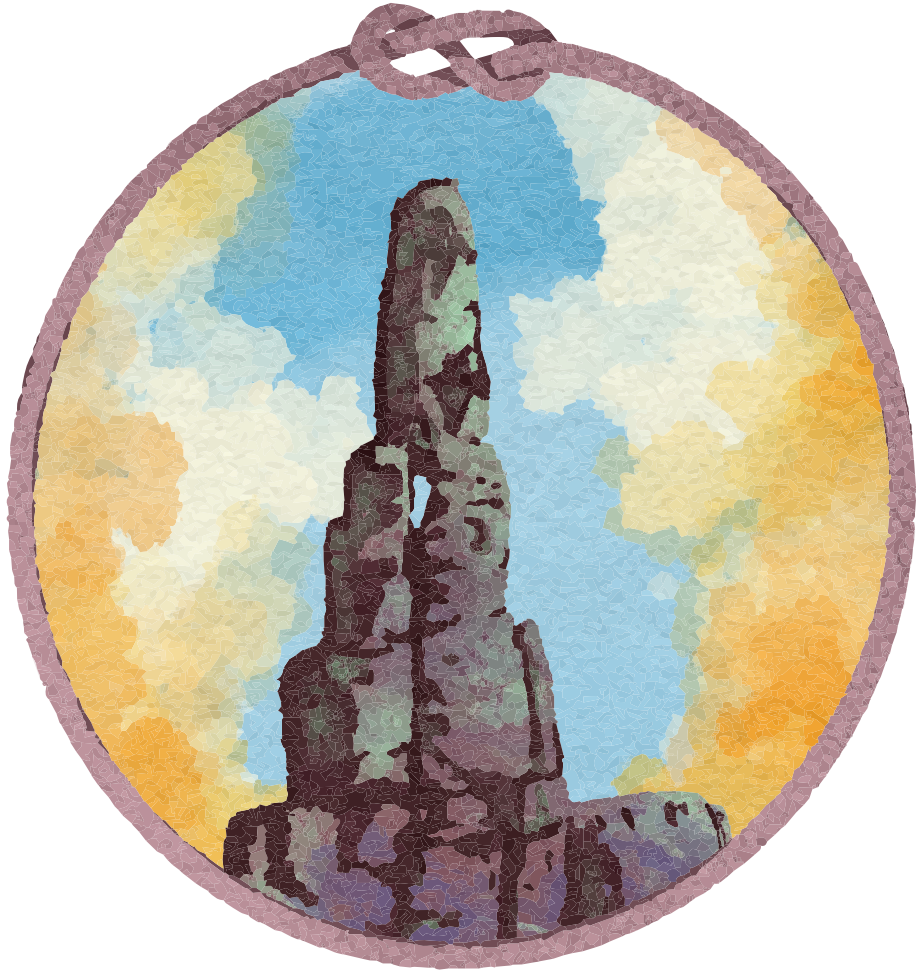Why is Purple Quartzite, Purple? Have you heard of the one-eyed, one-horned flying purple people eater? Well, then keep reading. Just kidding, that has nothing to do with this.
In the last post, we looked at how Quartzite is formed, the type of rock, and other rock you can see at Devil’s Lake. If you missed that, see here. What we didn’t answer is the question “Why is it purple?”
Let’s take a quick step backwards—Purple Quartzite is VERY unique. Almost all Quartzite is white or gray. What is crazy, is that often Purple Quartzite is referred to as Baraboo Quartzite because Baraboo, Wisconsin and Devil’s Lake State Park in particular, has the largest display of the rock in the purple color in the world.
So now to answer the question we started with… “Why is Purple Quartzite, Purple?”
 The color of the rock at Devil’s Lake State Park is due to iron being present when it was formed. Likely there were other specimens in addition to the iron (which would likely make a more reddish color) that were present that helped make the deep purple colors that can be found. This could have been the flora and fauna that existed in the location at the time (a loooooooooooooooong time ago).
The color of the rock at Devil’s Lake State Park is due to iron being present when it was formed. Likely there were other specimens in addition to the iron (which would likely make a more reddish color) that were present that helped make the deep purple colors that can be found. This could have been the flora and fauna that existed in the location at the time (a loooooooooooooooong time ago).
Something else that is interesting to note is that the Iron and other “things” that helped make the purple color, had to have been specific to the Baraboo area. History and the geography tell us this because the bluffs you see at “The Lake” were at one time part of a larger mountain range that reached up to the Wausau area (and probably taller than the Rockies!). The Quartzite that you find in that area, however, is grey in color (due to the lack of that same iron content).
 So imagine Wisconsin with a massive mountain range, really really tall and really really big extending almost the entire state on a diagonal. Yep, that is likely what it used to look like here. Thanks a lot glaciers for stealing our mountains and leaving us with hills ; ). (Note: truly magnificent, hills).
So imagine Wisconsin with a massive mountain range, really really tall and really really big extending almost the entire state on a diagonal. Yep, that is likely what it used to look like here. Thanks a lot glaciers for stealing our mountains and leaving us with hills ; ). (Note: truly magnificent, hills).
